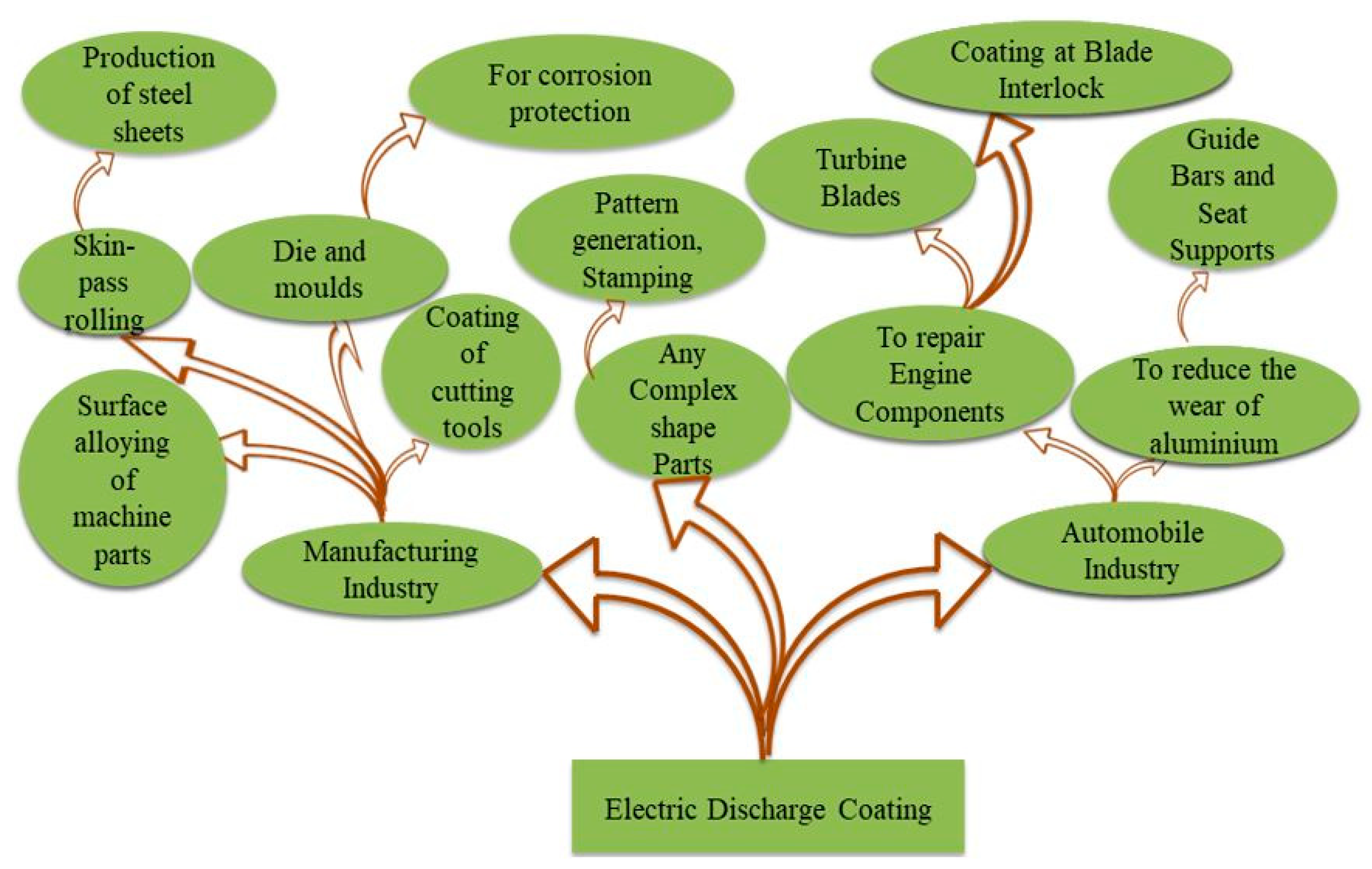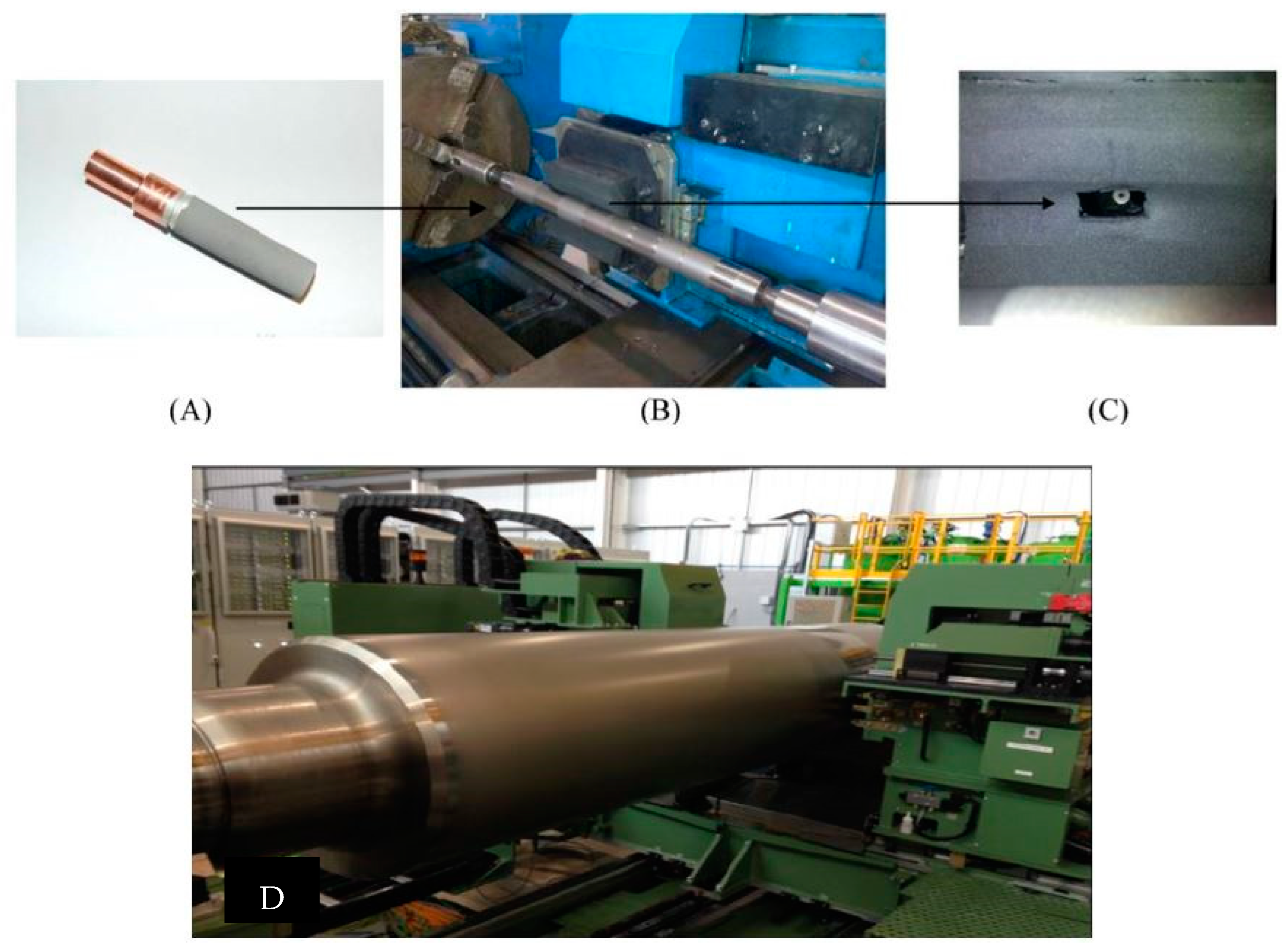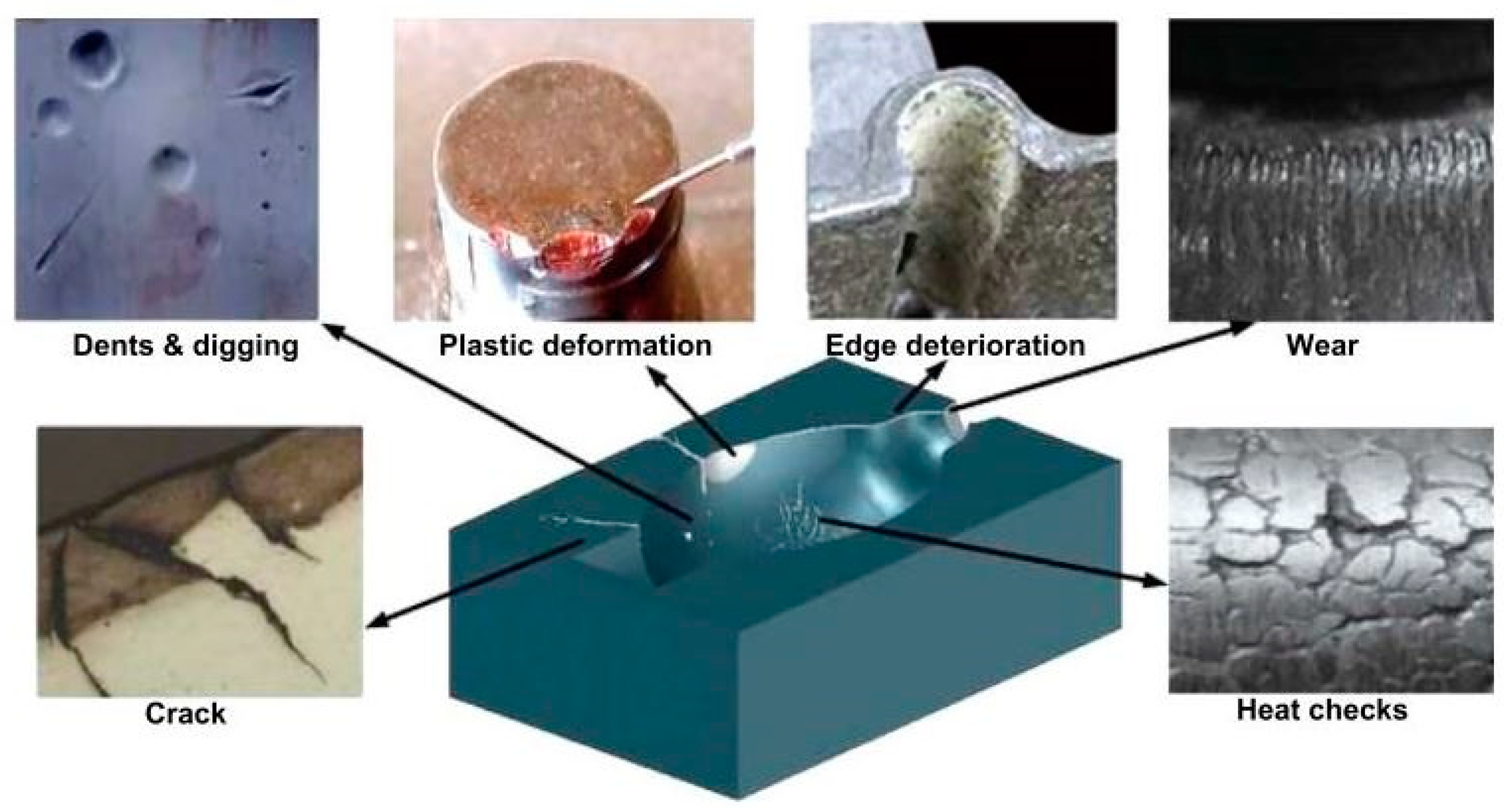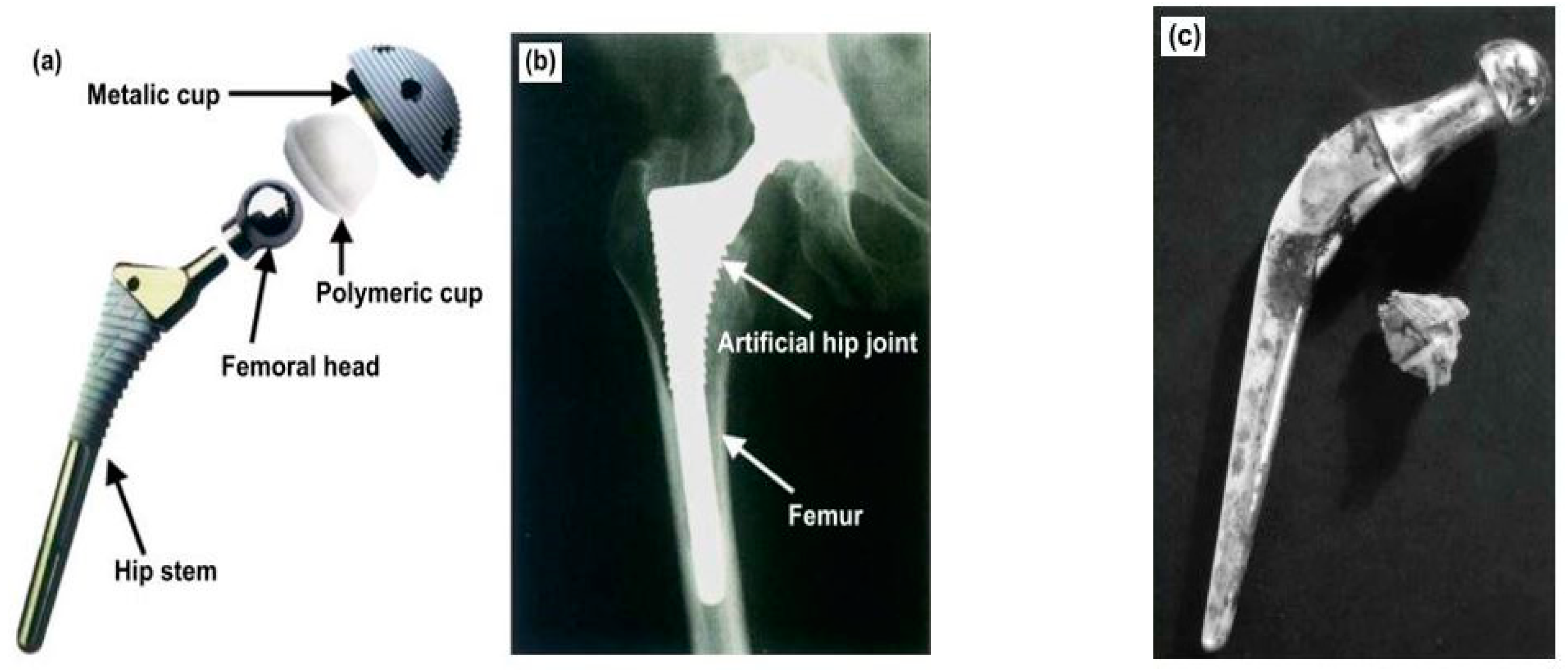You're using an outdated browser. Please upgrade to a modern browser for the best experience.

Submitted Successfully!
Thank you for your contribution! You can also upload a video entry or images related to this topic.
For video creation, please contact our Academic Video Service.
| Version | Summary | Created by | Modification | Content Size | Created at | Operation |
|---|---|---|---|---|---|---|
| 1 | CHANDER PRAKASH | -- | 1078 | 2022-10-24 04:09:33 | | | |
| 2 | Catherine Yang | Meta information modification | 1078 | 2022-10-24 04:15:55 | | |
Video Upload Options
We provide professional Academic Video Service to translate complex research into visually appealing presentations. Would you like to try it?
Cite
If you have any further questions, please contact Encyclopedia Editorial Office.
Tyagi, R.; Mandal, A.; Das, A.K.; Tripathi, A.; Prakash, C.; Campilho, R.; Saxena, K.K. Applications of Surface Modified by Electrical Discharge Coating. Encyclopedia. Available online: https://encyclopedia.pub/entry/30766 (accessed on 29 December 2025).
Tyagi R, Mandal A, Das AK, Tripathi A, Prakash C, Campilho R, et al. Applications of Surface Modified by Electrical Discharge Coating. Encyclopedia. Available at: https://encyclopedia.pub/entry/30766. Accessed December 29, 2025.
Tyagi, Rashi, Amitava Mandal, Alok Kumar Das, Ashutosh Tripathi, Chander Prakash, Raul Campilho, Kuldeep K. Saxena. "Applications of Surface Modified by Electrical Discharge Coating" Encyclopedia, https://encyclopedia.pub/entry/30766 (accessed December 29, 2025).
Tyagi, R., Mandal, A., Das, A.K., Tripathi, A., Prakash, C., Campilho, R., & Saxena, K.K. (2022, October 24). Applications of Surface Modified by Electrical Discharge Coating. In Encyclopedia. https://encyclopedia.pub/entry/30766
Tyagi, Rashi, et al. "Applications of Surface Modified by Electrical Discharge Coating." Encyclopedia. Web. 24 October, 2022.
Copy Citation
Electrical discharge coating (EDC) process is used to deposit material on workpiece surface from sacrificial or green compact tool electrode in an electrical discharge machine. Electrical discharge coating is an advanced and simple coating process that is applied for conductive materials due to the certain advantages, i.e., good adhesion among the parent material and coating, high efficiency to achieve thick coating, and ability to balance the composition of coated layer by using proper tool electrode material and dielectric fluid.
surface modification
coating
EDM
EDC
1. Introduction
There are various surface-coating technologies used currently, including electroplating, laser cladding, physical vapor deposition, and plasma spraying [1]. However, EDC is yet not widely employed by industries, even though many studies have highlighted its functions in different sectors and applications, as shown in Figure 1. EDC has a large range of applications in both the automotive and manufacturing industry. In the manufacturing field, surface modification through EDC is employed in electrical discharge texturing or roll texturing. In addition, it is extensively used in automotive industries in reducing the wear of aluminum and its alloys used in the aerospace and automobile industries [2]. Surface alteration is also applied successfully in a tool, die, and mold manufacturing industry; turbine blades making; automotive industry; and in other many industrial applications [3]. On the other hand, it can be applied in a coating on cutting tools to enhance its cutting performance and life, aa well as the surface alloying of dies, molds, and machining parts [4]. These applications are discussed in detailed below.

Figure 1. Recent applications of EDC.
2. In Roll Surface Texturing
Roll texturing is also named as the electric discharge texturing (EDT) process, which is one of the EDC applications. Roll texturing was used to deposit a hard particle of compact tool (Ti/W/Cr) onto the roll surface due to the electrical spark formed between a compact tool and roll. The industrial temper mill work rolls are one of the examples of roll texturing where the concept of EDC is employed. EDT is carried out by shot blasting and cross-grinding. It was observed that higher concentrations of W and Ti get deposited at the roll surface. The microhardness was due to the presence of hard carbides of W and FeC. The process of texturing of Sendzimir rolls through electrical discharge is also applied for the production of steel sheets. The hardness of the workpiece increases with improvement in its performance and the life cycle of the roll in roll texturing [5]. The electrical discharge coating was also employed with TiC-sintered tool to analyze the microhardness, coating thickness, surface roughness, and wear performance of the coated layer deposited on the roll surface. It was desirable for the better service life of the roll for industrial applications for consistent control of the surface texture. The method of skin-pass rolling was used for the evaluation of steel sheet surface texture by maintaining the roll surface topography. The effect on the clarity of coating and formability of the sheet press was studied. A hard layer was formed by EDC with a TiC electrode, which showed a Vickers hardness of greater than HV1500 and controllable surface roughness. The wear of coated rolls generated was greater than chrome-plated rolls [6]. Further, EDC was applied on A2 steel and over the temper mill roll by using the cemented tungsten carbide electrode as shown in Figure 2 [7].

Figure 2. (A–C) EDC surface bands on A2 steel and (D) EDC over temper mill roll [7].
3. To Repair the Turbine Blade
Thick EDC, which is known as “MS coating”, is applied to repair components. Conventionally, in the repair process of airplane engines, surface modification or cladding methods, such as plating, welding, or metal spray, are used. As an example of application of microspark coating, the sample is used in the low pressure turbine (LPT) blade interlock of the airplane engine [8][9].
4. Pattern Generation and Stamping
By using reverse EDM and by changing the process parameters, it is possible to produce the complex-shaped pattern [10][11]. Recently, a green compact tool was used to generate a predefined pattern by depositing its constituent materials [12]. EDC is also known as “MS coating” by which marks of two companies are stamped. It can be observed that even the edges of marks can be stamped clearly without masking [8][9].
5. In Guide Bars, Seat Supports/Bearing Plates
The metal weight and its quality have an important role in aerospace industries. Aluminum and its alloys have attracted attention in the automotive industry owing to the high specific strength and lightweight properties such that it can replaced steel. There is a variety of applications of aluminum alloys that have been used in the automotive industry to improve the tribological performance of [13]. Aluminum and its alloys suffer erosion due to the effect of airborne particles; hence, a coating is an effective way to overcome its erosion. To provide these qualities, EDC becomes an effective technique in terms of the coating.
6. In Die and Mould Coating
Other various vital industrial applications include manufacturing of mold, die, and turbine blades to prevent the defects as shown in Figure 3 [14][15]. EDC provides a hard and corrosion-resistant layer without changing the properties of the original material, which has broadened its application in die, tools, molds, turbine blades, etc. as they erode due to corrosion. Researchers reported that the life of molds and cutting tools can be enhanced by applying EDC coating using a Ti or TiC electrode [16][17][18].
7. In the Biomedical Field
The application of EDM has also been extended up to orthopedic implants due to involvement of a new technology in which dielectric fluids are mixed with certain additives i.e., powders of metal, surfactant, and different types of gases. It comprises mixing the liquid dielectric with some additives, for example, surfactant, metal powders, oxygen, and nitrogen gasses, which have extended the applications of EDM. Apart from enhancing the resistance to wear and corrosion, the mixing of additives has immensely helped in enhancing the mechanical properties and fatigue life of orthopedic implants [19][20]. Further, the applications of additive mixed process help to prepare the biocompatible and nanoporous coating film over the machined implant surface [21][22]. Figure 4 shows the artificial hip joint and corrosion occurred after implantation [23][24]. In summary, the EDC has an excellent contribution to modify the material surface and functionalization for biomedical applications [20][25][26][27]. With the help of EDC process, the biocompatibility of artificial implants can be upgraded by the cells’ attachment and proliferation [28][29].
References
- Prakash, C.; Kansal, H.K.; Pabla, B.S.; Puri, S. Effect of surface nano-porosities fabricated by powder mixed electric discharge machining on bone-implant interface: An experimental and finite element study. Nanosci. Nanotechnol. Lett. 2016, 8, 815–826.
- Chen, H.J.; Wu, K.L.; Yan, B.H. Characteristics of Al Alloy Surface after EDC with Sintered Ti Electrode and TiN Powder Additive. Int. J. Adv. Manuf. Technol. 2014, 72, 319–332.
- Lee, H.-T.; Yur, J.-P. Characteristic Analysis of EDMed Surfaces Using the Taguchi Approach. Mater. Manuf. Process. 2000, 15, 781–806.
- Okada, M.; Yoshida, A.; Furumoto, T.; Watanabe, H.; Asakawa, N.; Otsu, M. Mechanisms and Characteristics of Direct Cutting of Tungsten Carbide Using a Diamond-Coated Carbide End Mill. Int. J. Adv. Manuf. Technol. 2016, 86, 1827–1839.
- Elkoca, O. A Study on the Characteristics of Electrical Discharge Textured Skin Pass Mill Work Roll. Surf. Coat. Technol. 2008, 202, 2765–2774.
- Ueno, M.; Fujita, N.; Kimura, Y.; Nakata, N. Evaluation of Coating and Wear Characteristics of Roll Surface Coated with TiC by Electrical Discharge Coating. J. Mater. Process. Technol. 2016, 236, 9–15.
- Bröcking, R.; Meghwal, A.; Melzer, S.; Verdier, S.; Evans, G.; Lowbridge, T.; Vanhumbeeck, J.F.; Debrabandere, D.; Crahay, J. Development of Electrical Discharge Coating (EDC) as Chrome-Free Alternative for Increasing Campaign Length of Temper Mill Work Rolls. Iron Steel Technol. 2015, 12, 68–76.
- Ahmed, N.; Murray, J.W.; Yuzawa, T.; Nakagawa, T.; Sarugaku, S.; Saito, D.; Brown, P.D.; Clare, A.T. Formation of Thick Electrical Discharge Coatings. J. Mater. Process. Technol. 2020, 285, 116801.
- Goto, A.; Akiyoshi, M.; Ochiai, H.; Watanabe, M. Development of Micro Spark Coating. In Proceedings of the 24th International Congress of the Aeronautical Sciences, Yokohama, Japan, 29 August–3 September 2004; pp. 1–7. Available online: https://www.semanticscholar.org/paper/DEVELOPMENT-OF-MICRO-SPARK-COATING-Goto-Akiyoshi/0e4e5f31907babf4a7517bb160ba70b725736377 (accessed on 31 July 2022).
- Mazarbhuiya, R.M.; Dutta, H.; Debnath, K.; Rahang, M. Surface Modification of CFRP Composite Using Reverse-EDM Method. Surf. Interfaces 2020, 18, 100457.
- Mazarbhuiya, R.M.; Rahang, M. PCM Assisted Reverse Electro Discharge Machining Process for Pattern Generation. Mater. Manuf. Process. 2021, 37, 995–1002.
- Mazarbhuiya, R.M.; Rahang, M. Reverse EDM Process for Pattern Generation Using Powder Metallurgical Green Compact Tool. Mater. Manuf. Process. 2020, 35, 1741–1748.
- Chen, W.C.; Lin, H.M.; Uan, J.Y. Formation and Characterization of Self-Lubricated Carbide Layer on AA6082 Al–Mg–Si Aluminum Alloy by Electrical Discharge Alloying Process. Trans. Nonferrous Met. Soc. China 2016, 26, 3205–3218.
- Jhavar, S.; Paul, C.P.; Jain, N.K. Causes of Failure and Repairing Options for Dies and Molds: A Review. Eng. Fail. Anal. 2013, 34, 519–535.
- Aliyu, A.A.; Abdul-Rani, A.M.; Ginta, T.L.; Prakash, C.; Axinte, E.; Razak, M.A.; Ali, S. A Review of Additive Mixed-Electric Discharge Machining: Current Status and Future Perspectives for Surface Modification of Biomedical Implants. Adv. Mater. Sci. Eng. 2017, 2017, 8723239.
- Moro, T.; Goto, A.; Mohri, N.; Saito, N.; Matsukawa, K.; Miyake, H. Surface Modification Process by Electrical Discharge Machining with TiC Semi-Sintered Electrode. J.-Jpn. Soc. Precis. Eng. 2001, 67, 114–119.
- Miyake, H. Improvement of Tool Life through Surface Modification by Electrical Discharge Machining. Proc. ISEM 12 1998, 1405, 261–270.
- Devarani, N.; Joshi, S.N. Electric Discharge Alloying of Titanium and Aluminium on AISI P20 Mold Steel. Surf. Coat. Technol. 2021, 405, 126515.
- Mohammed, M.T.; Khan, Z.A.; Siddiquee, A.N. Surface Modifications of Titanium Materials for Developing Corrosion Behavior in Human Body Environment: A Review. Procedia Mater. Sci. 2014, 6, 1610–1618.
- Kiran, P.; Mohanty, S.; Das, A.K. Sustainable Surface Modification of Ti-Alloy Using Powder Mixed in Bio-Dielectrics through Micro-Electrical Discharge Coating Process. J. Clean. Prod. 2022, 362, 132375.
- Zou, R.; Yu, Z.; Li, W.; Guo, M.; Li, J. Influence of Porous Structure on the Machining Performance of Micro EDM. J. Mater. Process. Technol. 2016, 232, 43–51.
- Peng, P.W.; Ou, K.L.; Lin, H.C.; Pan, Y.N.; Wang, C.H. Effect of Electrical-Discharging on Formation of Nanoporous Biocompatible Layer on Titanium. J. Alloys Compd. 2010, 492, 625–630.
- Walczak, J.; Shahgaldi, F.; Heatley, F. In Vivo Corrosion of 316L Stainless-Steel Hip Implants: Morphology and Elemental Compositions of Corrosion Products. Biomaterials 1998, 19, 229–237.
- Liu, X.; Chu, P.K.; Ding, C. Surface Modification of Titanium, Titanium Alloys, and Related Materials for Biomedical Applications. Mater. Sci. Eng. R Rep. 2004, 47, 49–121.
- Wandra, R.; Prakash, C.; Singh, S. Investigation on Surface Roughness and Hardness of β-Ti Alloy by Ball Burnishing Assisted Electrical Discharge Cladding for Bio-Medical Applications. Mater. Today Proc. 2021, 50, 848–854.
- Chen, S.-L.; Lin, M.-H.; Huang, G.-X.; Wang, C.-C. Research of the Recast Layer on Implant Surface Modified by Micro-Current Electrical Discharge Machining Using Deionized Water Mixed with Titanium Powder as Dielectric Solvent. Appl. Surf. Sci. 2014, 311, 47–53.
- Sales, W.F.; Oliveira, A.R.F.; Raslan, A.A. Titanium Perovskite (CaTiO3) Formation in Ti6Al4V Alloy Using the Electrical Discharge Machining Process for Biomedical Applications. Surf. Coat. Technol. 2016, 307, 1011–1015.
- Prakash, C.; Kansal, H.K.; Pabla, B.S.; Puri, S. Processing and Characterization of Novel Biomimetic Nanoporous Bio Surface on β-Ti Implant by Powder Mixed Electric Discharge Machining. J. Mater. Eng. Perform. 2015, 24, 3622–3633.
- Yang, T.-S.; Huang, M.-S.; Wang, M.-S.; Lin, M.-H.; Tsai, M.-Y.; Wang, P.-Y.W. Effect of Electrical Discharging on Formation of Nanoporous Biocompatible Layer on Ti-6Al-4V Alloys. Implant Dent. 2013, 22, 374–379.
More
Information
Subjects:
Materials Science, Coatings & Films
Contributors
MDPI registered users' name will be linked to their SciProfiles pages. To register with us, please refer to https://encyclopedia.pub/register
:
View Times:
1.7K
Revisions:
2 times
(View History)
Update Date:
24 Oct 2022
Notice
You are not a member of the advisory board for this topic. If you want to update advisory board member profile, please contact office@encyclopedia.pub.
OK
Confirm
Only members of the Encyclopedia advisory board for this topic are allowed to note entries. Would you like to become an advisory board member of the Encyclopedia?
Yes
No
${ textCharacter }/${ maxCharacter }
Submit
Cancel
Back
Comments
${ item }
|
More
No more~
There is no comment~
${ textCharacter }/${ maxCharacter }
Submit
Cancel
${ selectedItem.replyTextCharacter }/${ selectedItem.replyMaxCharacter }
Submit
Cancel
Confirm
Are you sure to Delete?
Yes
No






